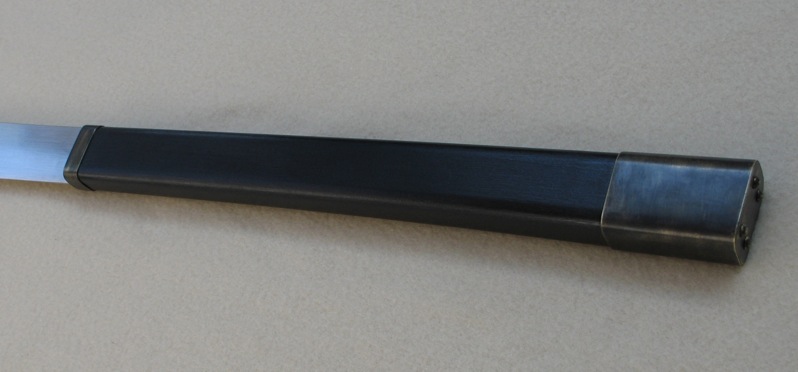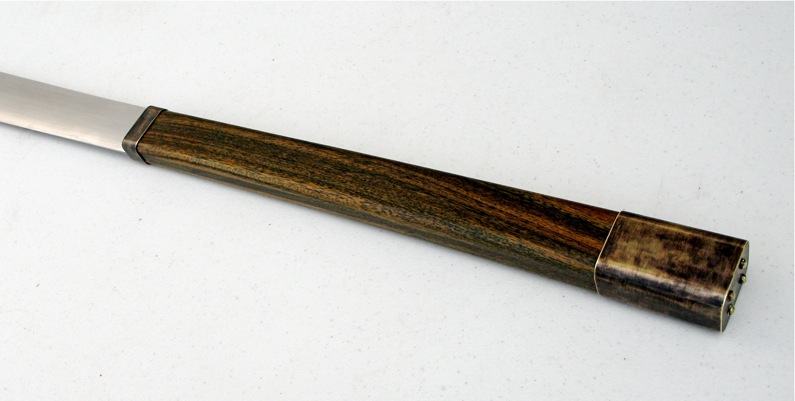Anyway, here are the specs :
Overall length :-------------------- 34 5/8 inches
Blade length :---------------------- 21 5/8
Handle length :-------------------- 13.0
Blade width at handle :--------- 1 1/4
Blade width at widest :---------- 2 3/4
Blade thickness at handle :--- 0.250
Center of gravity :---------------- 2 3/4 from handle
Blade steel :------------------------ 5160 spring steel
Weight :------------------------------ 2 lb 6,5 ounces
The handle is made of ebonized pearwood with fire oxidized brass metalworks.
Obviousely, this is a very beefed up version of The knife of Charlemagne, she behaves like a charm and handles just like a sword.
Your comments are welcomed.
Enjoy and thanks for looking.
Gabriel.



